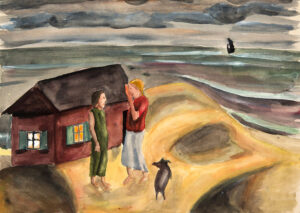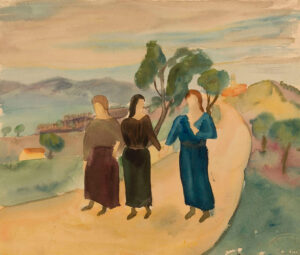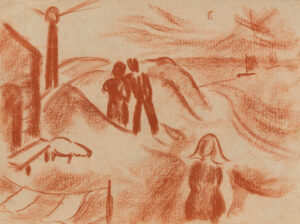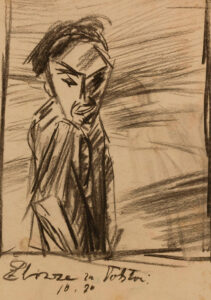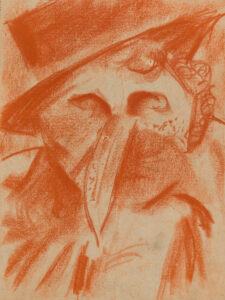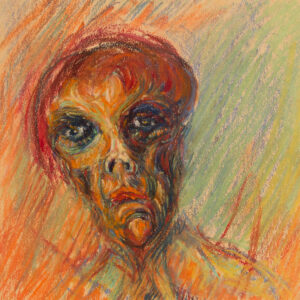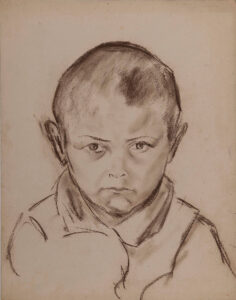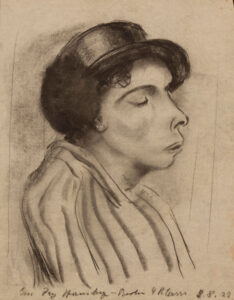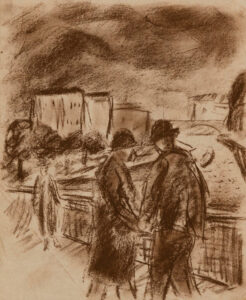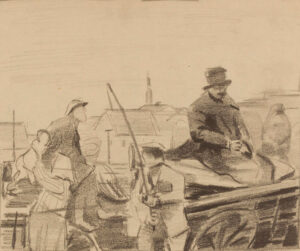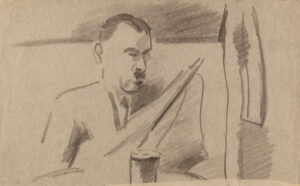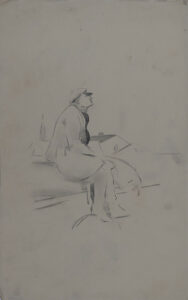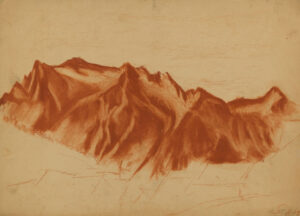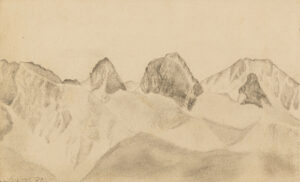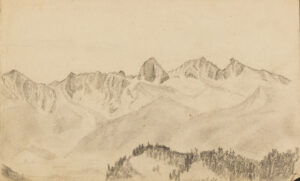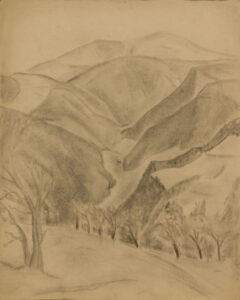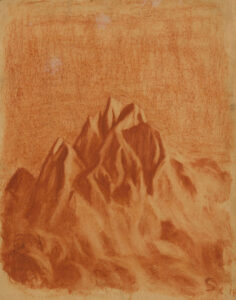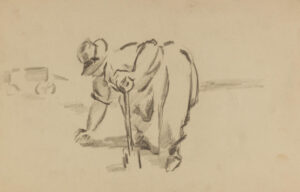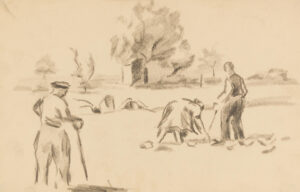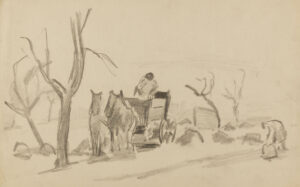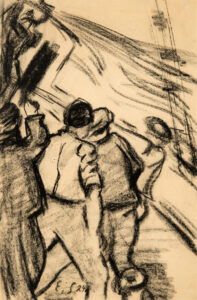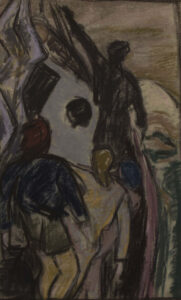Formative experiences
Ernst Saemisch grows in Günterstal, near the Black Forest, where he forms a deep, lifelong connection to nature. With the outbreak of World War I and the death of his mother in 1917, he relocates to Switzerland to continue his studies. It is during this period that he encountered the works of early 20th-century Avant-Gardes, particularly those of Braque and Gris, which inspire him to become a painter. Upon returning to Germany, Saemisch attends the renowned Kassel State Art Academy, but is expelled for publishing harsh critiques of its academicism. This leads him to enroll in the preparatory courses of the revolutionary Bauhaus school of Weimar, where he finds a place closer to his creative interests.
This section includes Saemisch’s earliest works, from his first artistic explorations in Switzerland to those he creates upon his return to Germany. These works reflect the devastation, anxiety, and sadness perceptible in his Death series—inspired by his mother’s death and developed in the context of the postwar depression in Germany. Most of them are figurative, and they already reveal an intimate affinity to the expressionist brushwork, as well as other features shown by most of his works: a passion for contrasts, a rejection of vagueness, and the prioritization of feelings, of a metaphysical and libertarian breath, over cold rationality.
In the Bauhaus, truth, determination, clarity, simplicity, and the inclusion of the individual into the collective prevailed. I was impressed by the strength of the affinity felt by a group that included personalities as strong as Klee, Gropius, or Feininger. Mostly of the former, who thought of art as a confrontation with everything that forms part of life.
ERNST SAEMISCH
